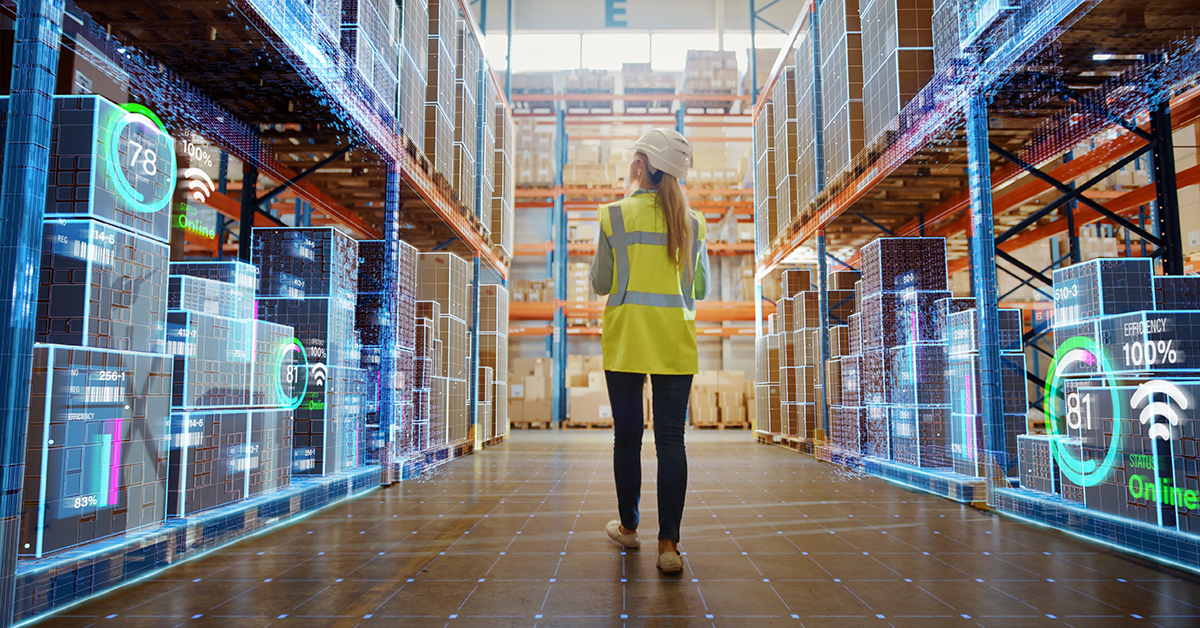Everywhere we look in logistics and supply chain operations, AI is part of the conversation.
Plenty of providers are quick to slap an “AI-enabled” label on their software, but just like the dot-com bubble, much of the hype is inflated. For C-suite leaders, this raises a critical question: what’s real, what’s marketing, and which AI use cases realistically add the most ROI for the future of your supply chain?
The truth is, AI is already driving meaningful change in logistics – but only for companies that know how to prepare and use it properly. Data discipline, operational alignment, and a sharp focus on ROI before plugging in any new tech is what separates the winners from those wasting millions.
According to Dan Keto, CTO and President of Easy Metrics, AI is clearly a tremendous gamechanger in every industry. “However, the hype of the value is currently ahead of the reality of the market. There’s a lot of work that has to be done before you can really get the value from these technologies.”
Let’s look at the current ways companies are using AI in logistics, how to leverage the tools correctly, and understand the pros and cons of using this tech as we chart a path forward.
Where AI is making its mark in logistics
Every executive has heard the promises: AI can give you faster, cheaper, smarter logistics. But AI’s impact is far from that simplistic, and it’s not uniform in how it can be used. It is emerging in specific, high-value areas where structured data and defined processes already exist.
Why is this so critical to know exactly where AI investments make the most sense? According to the 2025 Digital Trends in Operations Survey by PwC, 92% of operations and supply chain leaders say technology investments have not yet achieved the results they’d hoped for. Clearly, there’s a need to approach this from a disciplined and focused perspective.
Here’s where forward-thinking organizations are starting to see results:
- Smarter, more effective customer service. Instead of customer service reps digging through endless email chains to answer basic shipment questions, AI can now pull, summarize, and deliver the right details instantly. Humans get freed up for more strategic customer conversations.
- Orchestrating the complexity. Logistics is a balancing act of machines, people, and throughput. AI-based orchestrators can dynamically manage capacity constraints and labor variability, keeping products flowing smoothly in ways spreadsheets or guesswork can not.
- Eyes on the yard. Truck yards and container lots are notoriously inefficient. Vision AI, powered by camera networks, can automatically track trailers and containers, thus cutting down on human error and wasted labor.
- Enhancing safety. AI vision tools and biometric systems flag unsafe conditions in real time, protecting workers and reducing costly incidents. Platforms like Make U Safe are showing how data can drive cultural change.
- Faster, more informed decisions. Unified data models paired with AI give executives the power to run scenarios, quantify savings, and guide managers toward the most impactful actions.
Leveraging AI in logistics the right way
It’s tempting to treat AI like a magic wand, but there’s not a lot of room for error in the unforgiving, precise environment of logistics. Misapplied AI can cause service failures, regulatory issues, or just drain budgets.
So how can leaders be sure they’re using AI properly, when and where it will make the most critical impacts? Figuring this out requires a deliberate, ROI-focused approach.
Here are some ways to cut to the key areas effectively:
- Anchor to the pain point. Don’t start with the AI-enabled tools themselves — start with identifying the business problems that cost you the most.
- Define ROI early. Ask the hard questions: What problem are we solving? What’s the value if we succeed? How will we measure it?
- Fine-tune the data foundation. Invest in a unified, structured data model before deploying advanced AI. Without it, costs skyrocket and accuracy plummets.
- Secure small wins first. Target quick, measurable wins like customer service automation or enhanced yard tracking before chasing futuristic digital twin projects.
- Speak everyone’s language. Build data models flexible enough to satisfy finance, operations, and engineering simultaneously. And use standard nomenclature when combining disparate system data.
- Keep humans in the loop. AI handles repetitive tasks well, but it should never be set-and-forget-it. For processes where precision is mission-critical, active management and oversight remains non-negotiable.
Today’s most useful AI-enabled logistics tech
Any conversation about AI-enabled logistics platforms isn’t complete until we discuss the specific tools currently available. After all, some promised solutions are still hypothetical in reality, or are better suited for other areas of operations.
Right now, AI-enabled warehouse management systems (WMS) are gaining traction. Several other categories of AI tools are also on the market, each with its own role in the logistics ecosystem:
- Logistics workflow orchestrators – Solutions like Autoscheduler AI and Designed Conveyor Systems optimize how machines and labor interact.
- Specialized visibility platforms – Track trailers, containers, inventory optimization, and even employee safety in real-time with solutions like Vision Platform.
- Safety systems – Platforms such as MakuSafe technology (not AI per se, but vital data feeds are enhanced with AI tech) help ensure safer logistics operations.
Many of these applications are still undergoing development and maturation as the technology evolves. That said, no matter the application’s purpose, any AI tech tool is only as good as the data it runs on..
The reality is that most operations have information scattered across WMS, ERP, robotics, and labor systems. On their own, those sources tell partial stories. “A unified data model brings them together into a single source of truth that AI can trust,” explains Keto. “That alignment not only drives accuracy, it unlocks the real value of AI—turning disconnected activity into clear, actionable intelligence that improves workflow, cost, and ultimately profitability.”
Solutions like the Easy Metrics platform are built on a unified data foundation, enabling enterprises to unify and condition their data, so any application using AI is working with the best information.
Start there, and the rest follows.
Real talk: the pros and cons
AI in logistics isn’t inherently good or bad – it’s a tool, and like any tool, its value depends on how it’s used. Executives need to be realistic about the pros and cons of adopting AI technology into logistics applications:
- The upside: Improved visibility, faster decision-making, reduced waste, improved safety, optimized labor and equipment, happier customers.
- The downside: High upfront investment, risk of wasted spend if mis-scoped, and the danger of overreliance on immature technologies.
The key takeaway? AI is a lever for transformation, but not a turnkey solution. Treating it as an engineering project with a defined problem, clear ROI, and strong governance is what separates successful companies from the hype-chasers.
What’s next in AI in logistics?
Executives often want immediate results, but logistics transformation is a marathon, not a sprint. In the next three to five years, expect AI to dominate in customer service and administrative functions, workflow orchestration, and early safety applications. Although agentic AI is still in the maturation stages for most applications, Gartner predicts half of all supply chain management solutions will feature agentic AI by 2030. In 10 years, the landscape will be unrecognizable… similar to how smartphones became indispensable within a decade.
AI won’t eliminate jobs; it will redefine them. Repetitive, low-value work will disappear, while higher-value roles in strategy, analysis, and customer engagement will expand. There will always be a need for the people who will orchestrate and oversee any functions enabled with AI.
What to watch:
- Overpromises of instant ROI
- Vendors selling AI “bolt-ons” without addressing data readiness
- Aspirational moonshots (like digital twins) that aren’t yet commercially viable
How to keep pace:
- Partner with innovators like Autoscheduler, Designed Conveyor Systems, and Easy Metrics
- Track supply chain research from sources like Gartner
- Most importantly: get your data house in order today
AI in logistics: Final thought:
Logistics leaders who bake the right data foundation into their AI strategies from the get-go will own the next decade. Start by exploring how Easy Metrics can unify and condition your enterprise data and unlock the full potential of AI for your supply chain.





